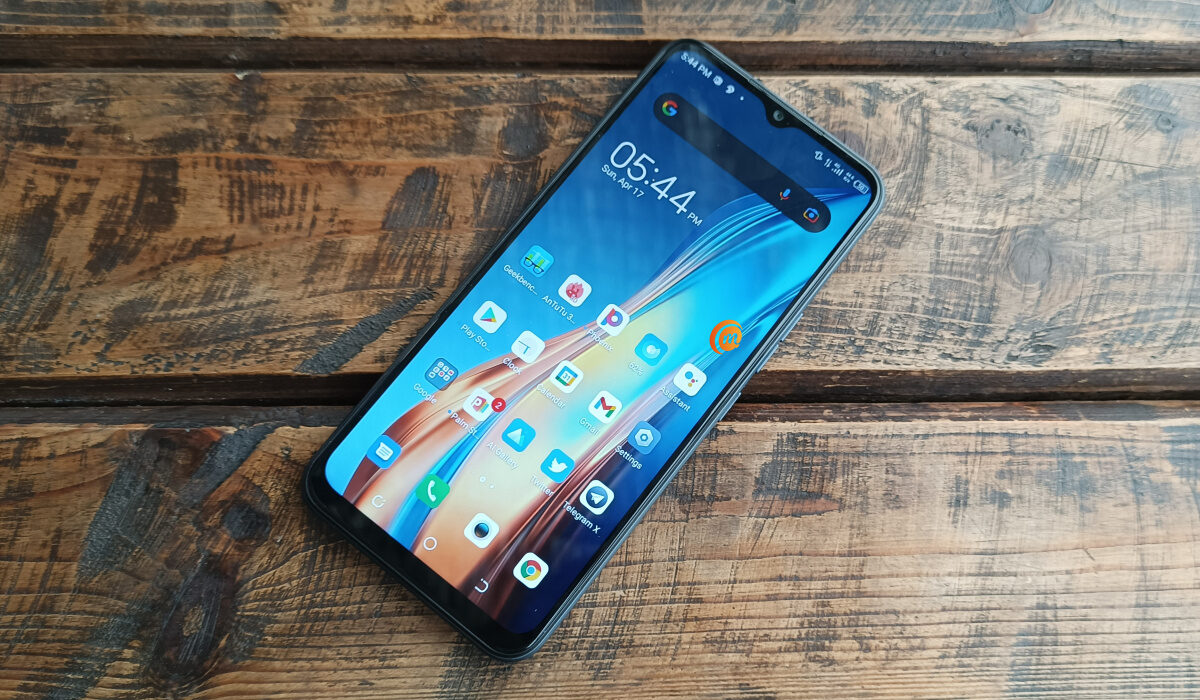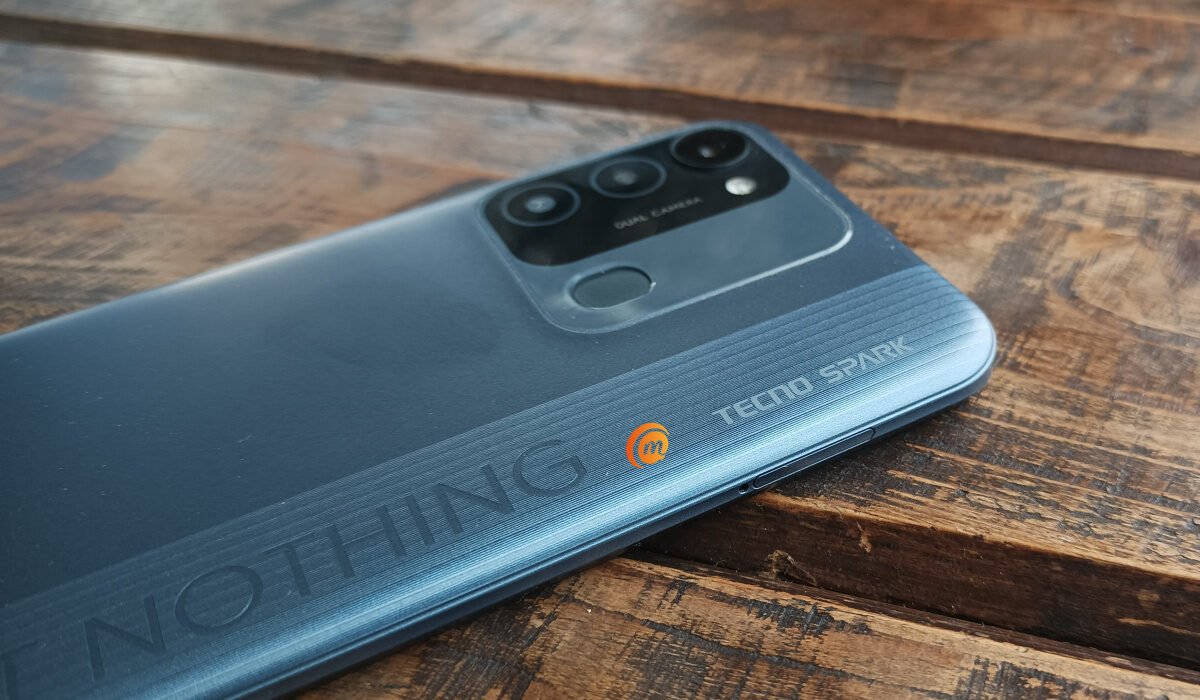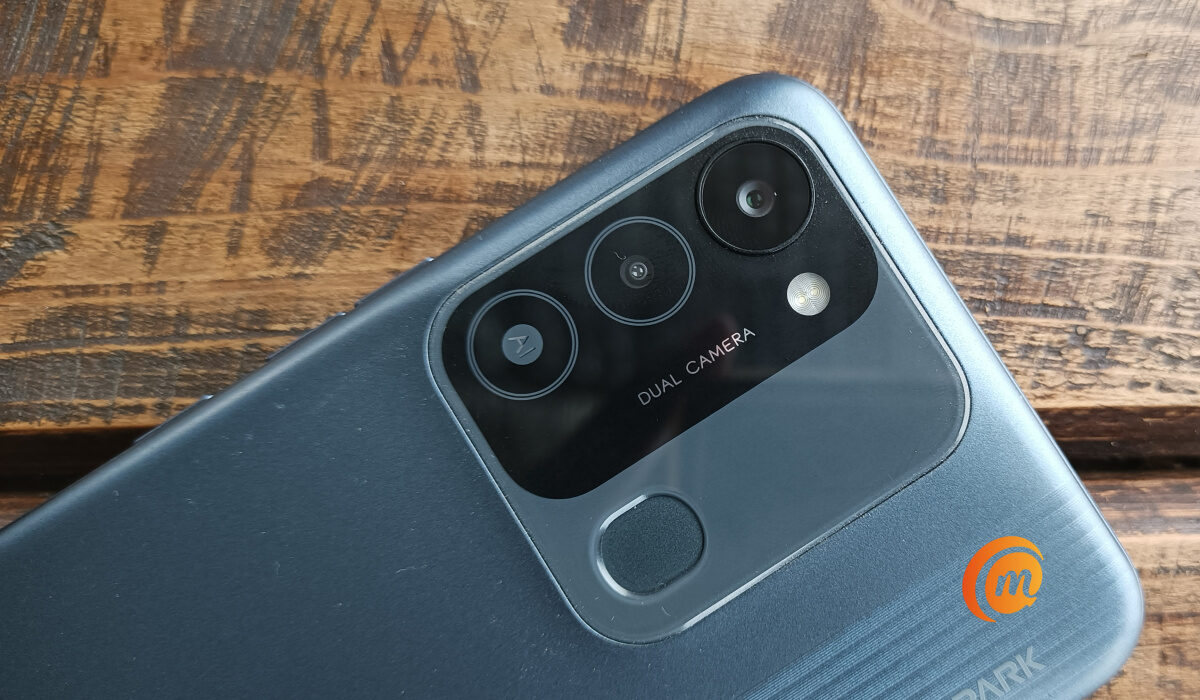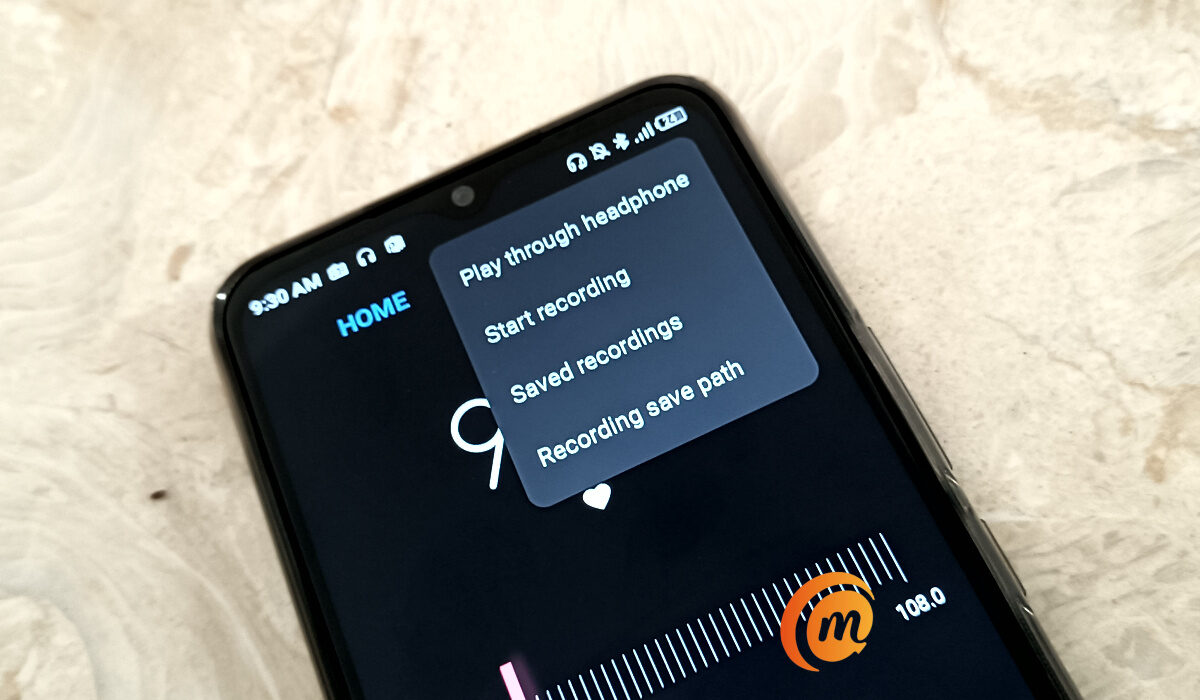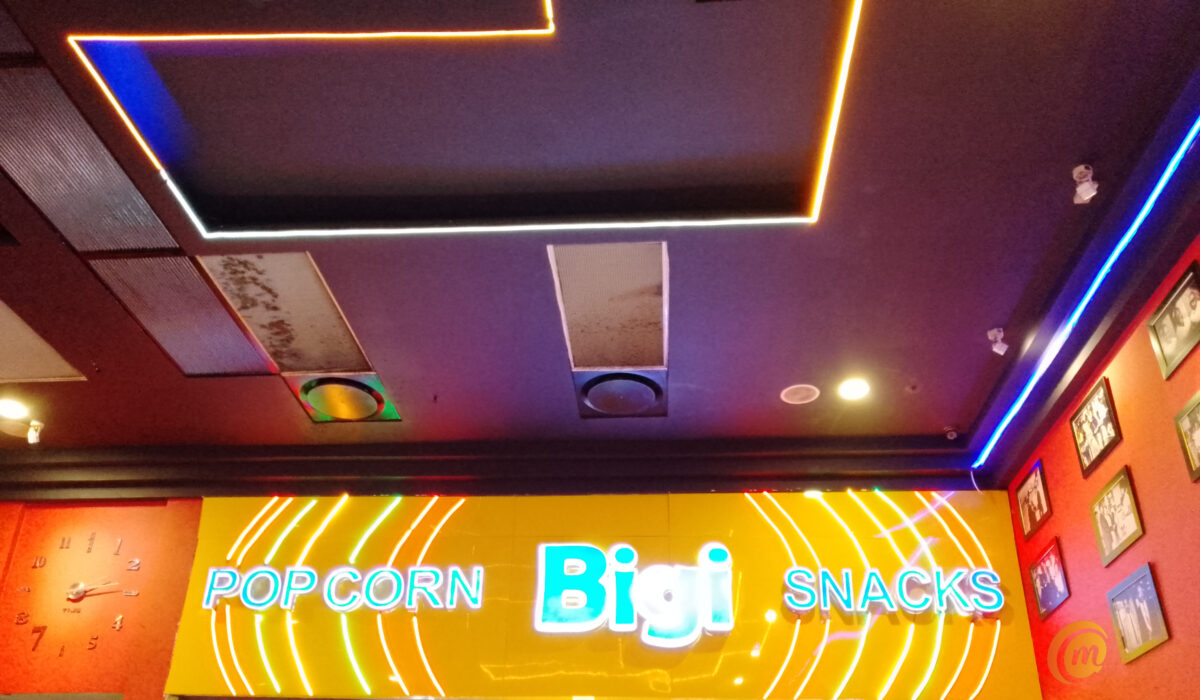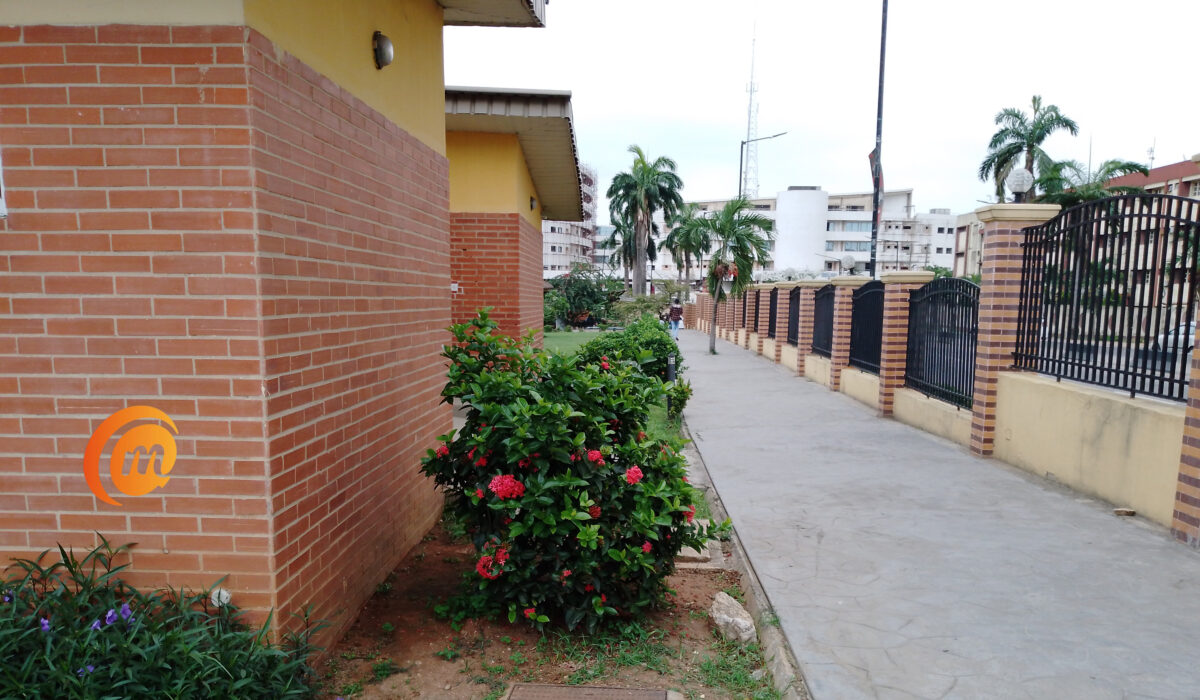TECNO has given their virtual RAM feature a brand name, Memory Fusion. Some models have it listed as MemFusion. The naming inconsistency aside, you get the picture. What virtual or extended RAM does is allocate a small part of your phone’s built-in storage memory for use to assist apps run.
TECNO Spark 8C Review: Quick specs
OS: Android 11Supported Networks: 2G/3G/4GDisplay: 6.6-inch, 720 x 1600 pixels resolution, 90 Hz refresh rateProcessor: Unisoc T606Selfie Camera: 8 MPRear camera: 13 MP dualRAM: 3 GBROM: 64 GB External Storage: microSD, up to 256 GB (dedicated slot)Battery: 5000 mAh Charging: 10W charging
TECNO Spark 8C Review: Unboxing
In the box are the following items:
The phone itself Transparent soft silicon case 3.5mm audio headset Wall charger USB cable SIM ejector pin 12 + 1 months warranty card
TECNO Spark 8C Review: Physical Build
The front of the phone is the typical touchscreen slab; it is nothing out of the ordinary. The back is where it gets interesting. The Spark 8C has a design that is quite catchy. The right side of the back panel has vertical grooves with embossed text and TECNO Spark branding on it. In the top left corner, you will find the dual camera pod and the fingerprint scanner built into a raised island, and different colours used to demarcate them (pictured above). It is a visually pleasant arrangement. Initially, I wondered what the experience would be using the fingerprint scanner. But it works well. I don’t find my finger tapping on the camera instead of the scanner.
TECNO Spark 8C Review: User Interface and Software
TECNO Spark 8C runs HiOS 7.6 based on Android 11. HiOS is the name of the company’s custom user interface. It is packed full of useful features. Those feature include: screen recording, peek proof (for hiding what you are reading or typing from Peeping Toms), Vault for keeping your apps and files safe, dual apps, so you can use two WhatsApp lines on the same phone, themes, and game mode, among others. It is a feature-packed toolbox. However, HiOS can also be annoying, thanks to the barrage of notifications and ads you get peppered with as soon as you set the phone up and it makes an Internet connection. There is an army of pre-installed apps fighting for your attention, and it is quite overwhelming and annoying. The amount of bloat in HiOS is on the high side. Thankfully, some of those pre-installed apps can be uninstalled. Those that cannot be uninstalled can be disabled. You can also dive into the settings to disable notifications from any app. So, HiOS can be tamed to behave how you want: it is just a lot of work.
TECNO Spark 8C Review: Network, Phone Calls
In-call audio is a mixed bag. At the other end, callers say the audio isn’t sharp, though it didn’t prevent them from hearing me. At my end, I hear my callers well, though the tonal quality is deep and a little subdued. Which isn’t out of place for a mobile phone in this class. TECNO Spark 8C supports 2G, 3G, and 4G networks. Setting up the phone for internet access was without issues. Once the SIM cards were in (it is a dual SIM phone), it locked on to the networks and the Internet connection came on. There was no need to dig into the phone settings for anything.
TECNO Spark 8C review: Multimedia
The FM Radio works fine. It requires for a 3.5mm cable to be plugged in and serve as an antenna. You can play radio through the headphone or speakerphone. You can also record shows for playback at your convenience. Music and video playback is good as well.
TECNO Spark 8C Camera Review:
At the back of the Spark 8C is a 13 MP main camera and a QVGA lens, with dual-LED flash. At the front of the device is an 8 MP lens for selfies. I took both for a spin. Have a look at the sample photos below. Rear Camera: Selfie Camera:
TECNO Spark 8C Review: Performance
This section is super important to this review, because it is the unique selling point of the Spark 8C. The extended RAM feature is to improve performance, after all. However Virtual RAM works is that a portion of the phone’s storage memory is allocated to boost the built-in RAM and help keep apps from running out of memory and shutting down in the background.
Our review unit has 3 GB RAM built-in, and Memory Fusion let us enable 1GB, 2GB, or 3GB virtual RAM. We ran the phone without Virtual RAM enabled and then with the feature enabled, and we can say that Memory Fusion does provide a performance boost. With 3 GB virtual RAM enabled, we experienced less shutdowns of apps in the background and so could keep more apps running. 3 GB RAM + 3 GB extended RAM does not deliver the same performance that 6 GB of RAM does, but it does assist.
Personally, I think that Virtual RAM is one of the best developments we have seen in Android phones of recent. We reviewed the Camon 18 Premier and saw it in action there. It is good to see that it is available on the Spark 8C as well.
TECNO Spark 8C Review: Battery Life and Charging
Lastly, we look at the battery life of the Spark 8C. With a 5000mAh battery, we weren’t expecting poor battery life, and we were not disappointed. We readily pushed the phone hard and did not run out of juice till the end of the day. With moderate use, we easily got two full days of battery life. There is 10W charging for topping up the battery as well.
Last Word
And so we have come to the end of our TECNO Spark 8C review. This is a striking mid-range smartphone that offers decent performance. Battery life is superb, and the cameras are not bad at all either. And you will love to flash the phone wherever you go, because of its distinctive back cover design. It comes in four colour options: Turquoise Cyan, Magnet Black (the colour of our review unit), Iris Purple, and Diamond Grey. The 2/64 GB base variant sells for ₦59,500, while the 3/64 GB variant with Memory Fusion sells for ₦66,000. Those are competitive prices in the market. If you are looking for a good mid-range smartphone, you should give TECNO Spark 8C consideration.
Don’t miss our reviews. Follow our news on Google News.Join our WhatsApp Group, to be notified of the most important articles and deals,Follow us on Instagram, Facebook, Twitter, and YouTube.
